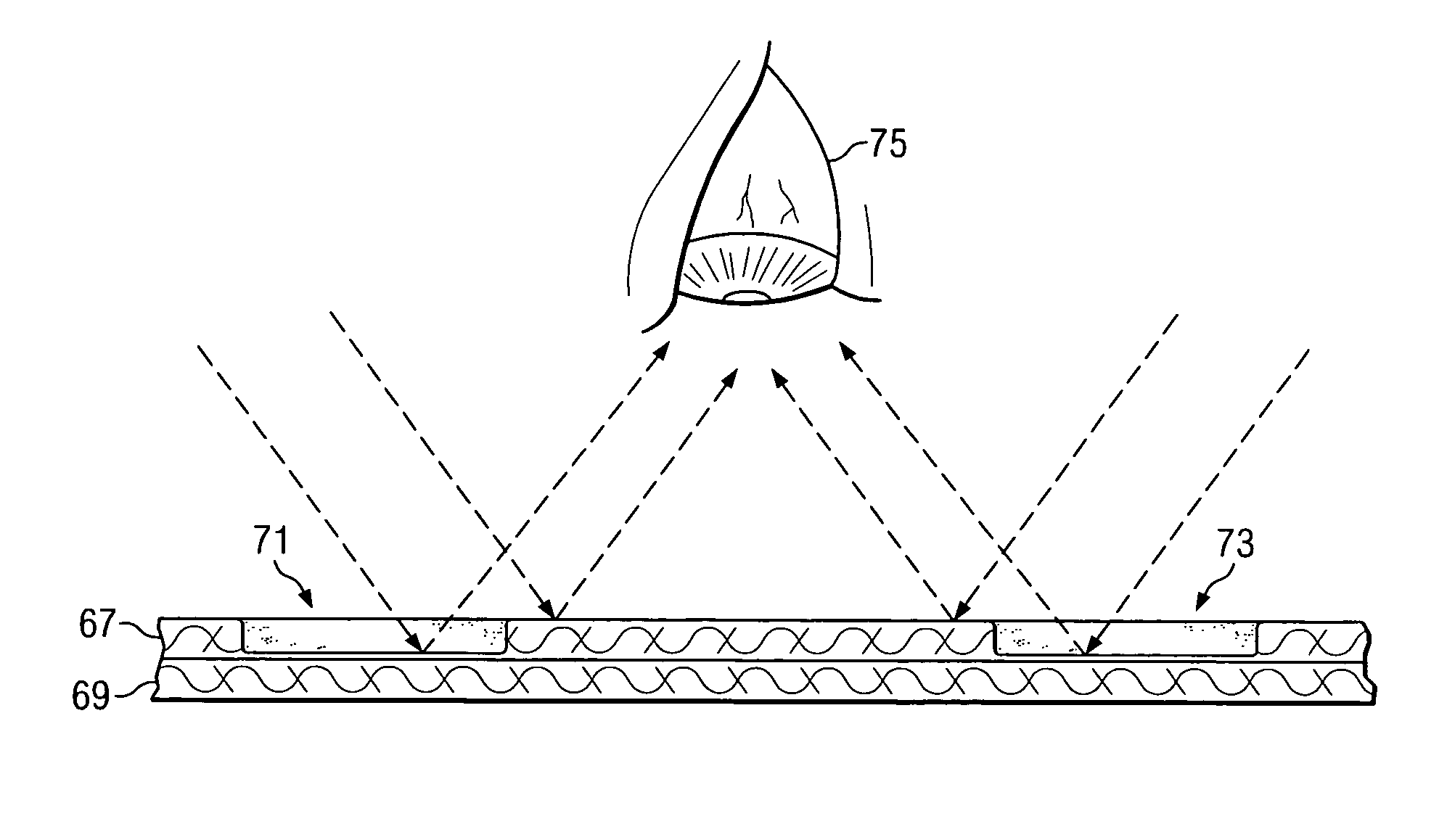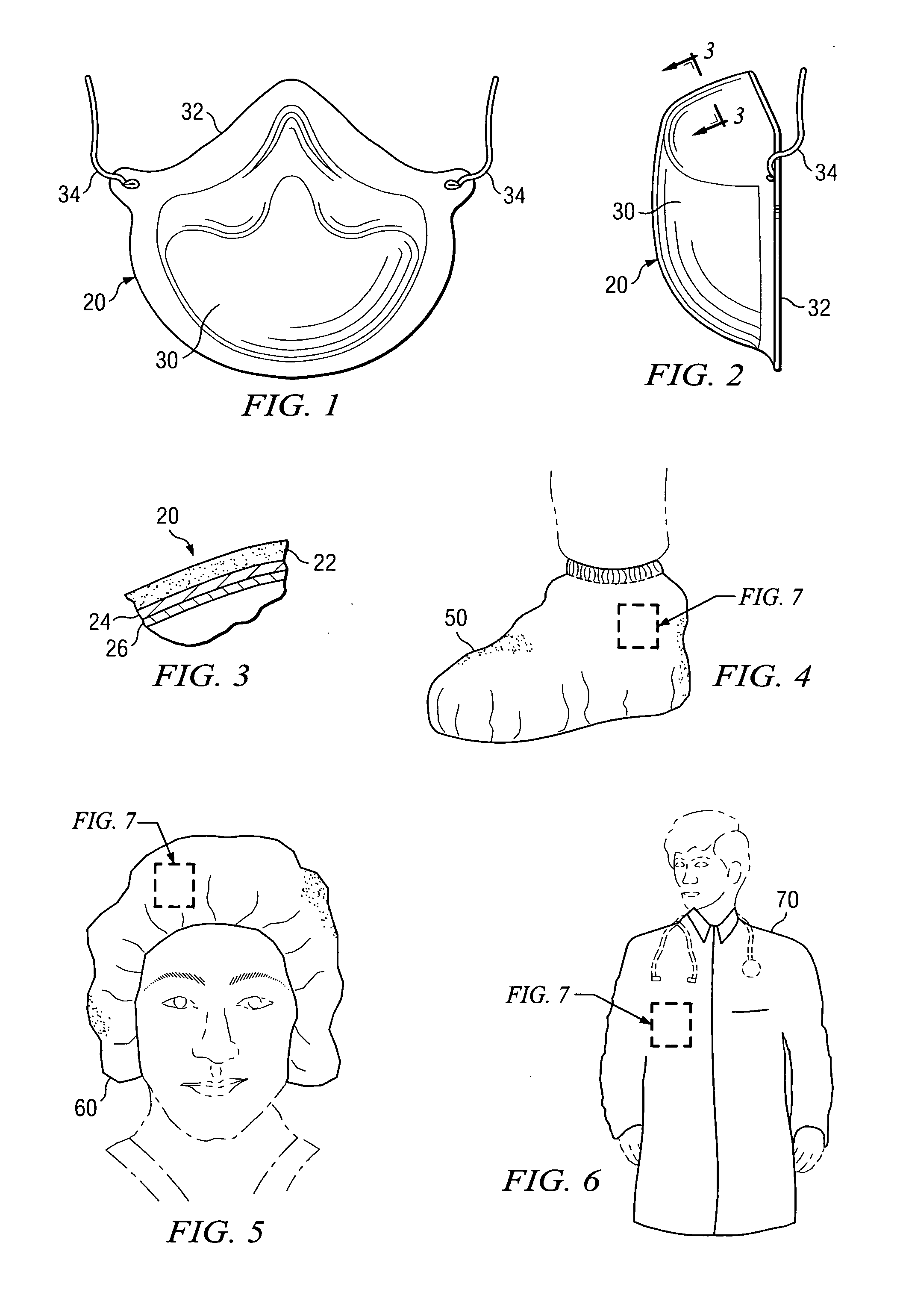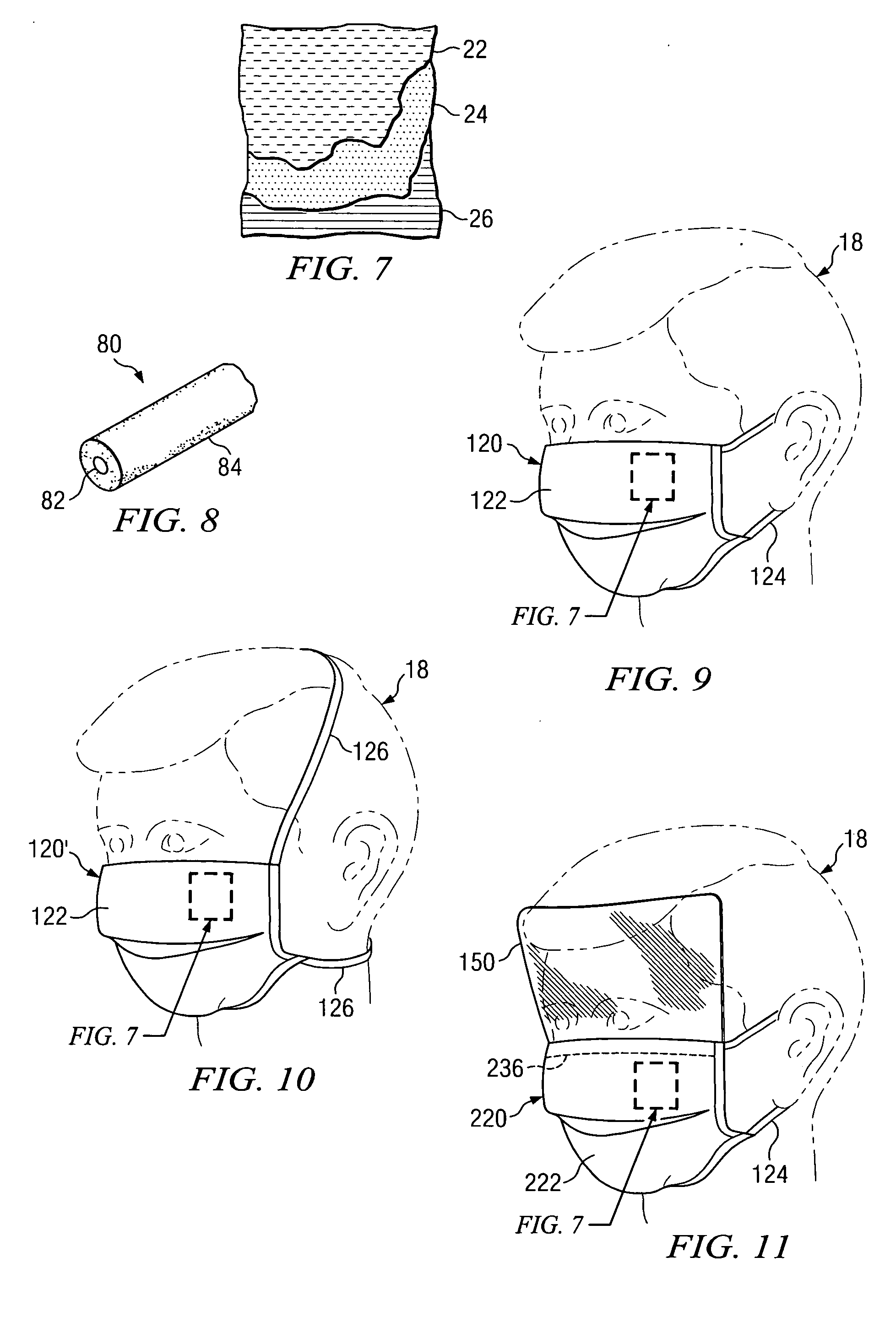Multiple layer nonwoven products and methods for creating color schemes and for producing such products
a multi-layer, non-woven technology, applied in the direction of weaving, sanitary towels, transportation and packaging, etc., can solve the problems of nonwoven materials that cannot be identified by visual appearance, non-woven materials that have a limited use life, and may have a long use life, so as to reduce the amount or quantity of pigments, and eliminate or substantially reduce the damage of meltblown non-woven materials
- Summary
- Abstract
- Description
- Claims
- Application Information
AI Technical Summary
Benefits of technology
Problems solved by technology
Method used
Image
Examples
example
[0099] A face mask product having an outer fabric made of SMS as described below has been produced.
Nonwoven material% Pigment by weightNominal Basis WeightSpunbond2.4% seagreen10 grams / square meterMeltblown 2% wisteria 5 grams / square meterSpunbond 3% robin's egg blue10 grams / square meter
[0100] For other applications, face mask 120 may be formed in part from at least one layer of nonwoven material having two or more sublayers. For example, face mask body 122 may be formed from a layer of nonwoven material (not expressly shown) having a first sublayer, second sublayer and a third sublayer. Each sublayer of nonwoven material may be formed from the same type of nonwoven material such as spunbonded or meltblown. Each sublayer of the nonwoven material may have a different color or color scheme such as previously described with respect to layers 22, 24 and 26. Teachings of the present invention may be satisfactorily used to form desired color schemes on multiple layers of different typ...
PUM
| Property | Measurement | Unit |
|---|---|---|
| Diameter | aaaaa | aaaaa |
| Color | aaaaa | aaaaa |
| Concentration | aaaaa | aaaaa |
Abstract
Description
Claims
Application Information
 Login to View More
Login to View More - R&D
- Intellectual Property
- Life Sciences
- Materials
- Tech Scout
- Unparalleled Data Quality
- Higher Quality Content
- 60% Fewer Hallucinations
Browse by: Latest US Patents, China's latest patents, Technical Efficacy Thesaurus, Application Domain, Technology Topic, Popular Technical Reports.
© 2025 PatSnap. All rights reserved.Legal|Privacy policy|Modern Slavery Act Transparency Statement|Sitemap|About US| Contact US: help@patsnap.com



